CATHEDRAL QUARTER TRAILS - DERWENT
DERBY CATHEDRAL QUARTER – 6 DERWENT
Stylish, independent shops, great places to eat and drink, valued professional services and impressive historical landmarks. Derby’s Cathedral Quarter has it all.
River Derwent

Derwent rises at Swains Greave between Bleaklow and Howden Moors in North Derbyshire. It flows south through Derbyshire for its entire journey. Before merging with the River Trent at Shardlow. More than any other river its waters have played a vital part in driving mill machinery. Placing Derbyshire at the forefront of the Industrial Revolution. In December 2001, the 15-mile stretch of the Derwent Valley from Matlock Bath to Derby was designated by UNESCO as a cultural World Heritage Site.
A citation states: ‘The cultural landscape of the Derwent Valley is of outstanding significance because it was here that the modern factory system was established to accommodate the new technology for spinning cotton developed by Richard Arkwright. Insertion of industrial establishments into a rural landscape necessitated the construction of housing for the workers in the mills, and the resulting settlements created an exceptional industrial landscape that has retained its qualities over two centuries.’
Former Magistrates’ Court
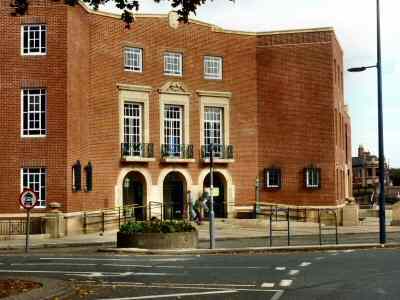
A Grade II listed building, the Magistrates’ Court, was completed in 1934 as part of the Central Improvement Scheme. This also included the council house, the river gardens, an open market and a bus station. The designer was Charles H Aslin, who held the position of Derby Borough architect, from 1929 to 1945. A police station was also added on the northern side of the court.
After standing empty for a decade. Work started in 2013, to knock down the former police station and replace it with a hotel. Also, the same year work commenced on the regeneration of the former Magistrates’ Court. To provide units for start-up businesses, a cafe and space for a new local studies library.
Cathedral Green
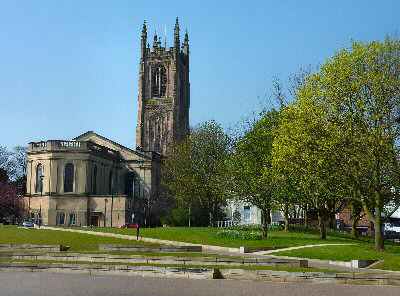
The area now known as Cathedral Green was once the home of Derby Power Station. It was built late in the 1800s when electricity was starting to become a proven alternative to gas. As the power station continued to increase its capacity and in 1928 the Borough Council passed a proposal for the creation of a ‘super-station’.
This allowed Derby to meet all its requirements without having to buy power from elsewhere. Following the change from coal to oil, the power station was demolished in the early 1970s. After remaining as a grass-covered open space for many years. The green has been redesigned to make the area more visitor friendly. An events area and a footbridge across the river have been included in the improvements.
Former Derby Silk Mill
The Silk Mill with its eye-catching Italian-style tower is a significant landmark in the city. Photographs of it must have appeared in more books and tourist guides about Derby than virtually any other location. Now it forms part of the Derwent Valley Mills World Heritage Site.
The Chinese started to manufacture silk 3,000 years ago. Lovely to the eye and feel, silk has been in demand ever since it was first discovered. Production eventually reached Europe. It was the Italians who first developed a fine silk thread and gained a monopoly in its manufacture.
There was considerable demand for silk in this country. But, the raw materials had to be obtained from China or Italy making it a very expensive commodity. The Italians closely guarded their secret method of production and all the initial attempts to match them failed.
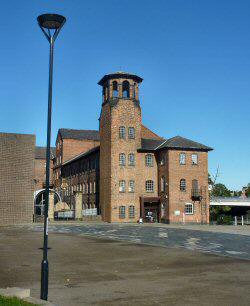
In 1702, Thomas Cotchett, a solicitor from Mickleover, became interested in the potential commercial rewards of silk thread manufacture. By the use of water-driven machinery. He entered the market and reputedly asked George Sorocold to build him a mill by the River Derwent. The mill used ‘Dutch machines’, but the project was not successful.
John and Thomas Lombe
On the verge of bankruptcy, Cotchett withdrew. But, John Lombe, one of Cotchett’s employees was determined the venture would succeed. Despite the risks involved, he went to Piedmont in Italy. Where silk production was at the forefront, to both work and spy. He drew diagrams of the equipment and is said to have smuggled them back to Britain, inside bales of silk fabric.
Assisted by his half-brother, Thomas. He set up the Silk Mill, which was built in 1717-8. It was rebuilt in 1821 and again after a fire in 1910. Only the carrying arches and the bell tower remain from the 18th-century structure. The tower only acquired its present appearance, after the 1821 fire. Although some of the brickwork seems to be original. In 1974, Derby’s Museum of Industry and History was opened on the site. Currently, the museum is being redeveloped and is expected to reopen in 2021.
The Silk Mill was the first factory in England. Where all the processes were carried out under one roof and utilising one source of power. It is now a Derwent Valley Mills World Heritage Site.
John Lombe died in 1722, believed to have been poisoned by a woman. Who had been sent by the Italians to exact revenge for stealing their secrets.’
St Mary’s Bridge (outside Cathedral Quarter)
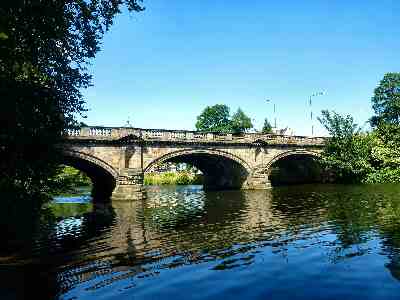
Ancient, St Mary’s Bridge is an impressive neo-classical structure. Built by Thomas Harrison of Chester, between 1789 and 1794. One of the original bridge piers can still be seen when the water level in the River Derwent is low.
It is remembered as the place where the Padley martyr’s remains were hung on the bridge outside the chapel. At that time it was serving as a gaol. They had been hung, drawn and quartered after being convicted of treason for their religious beliefs. The ‘red’ windows in St Mary’s Roman Catholic Church show the six Derbyshire Martyrs. Three of whom were the Padley martyrs, who died for their faith.
Bridge Chapel
St Mary’s Bridge Chapel is one of only six bridge chapels left in England. It stands beside the 18th-century bridge, which replaced a medieval bridge. To which the chapel was attached. The precise date when the first bridge chapel came into existence is uncertain. But, it was probably around the late 13th to the early 14th century. When it was built on the same site as the present chapel. At the time when the chapel was built, travel was a dangerous occupation. Robbery and murder were not uncommon and the bridge chapel offered spiritual reassurance to travellers.
The bridge chapel also served as a collection point for tolls levied on traffic entering Derby. It was the only crossing point of the River Derwent into Derby. And, it was the resident hermit’s responsibility to collect the tolls of people and livestock crossing the bridge. The hagioscope, or squint, on the north wall would have been used to monitor traffic. It also could be used by passers-by to see the light indicating the presence of the Blessed Sacrament. The chapel is open to the public for several days every year.
Silk Mill Public House
The first records of the existence of the Old Silk Mill pub by name are dated 1874. However, it is likely that it dates back much further. To the years when Sir Thomas Lombe’s historic Silk Mill was fully operational. It was demolished in 1924 and replaced on a slightly different site by the present half-timbered building.

A mural takes up the whole of one of the external walls. It was painted in 1986, depicting the Silk Trades’ Lock-out of 1833/4. When hundreds of newly-joined trade unionists found themselves locked out. Because of their membership in the Grand National Consolidated Trade Union. In November 1833 a silk manufacturer sacked a man who refused to pay a fine for poor workmanship. This resulted in eight hundred workers going on strike in support of their colleagues. Other mill workers followed, and the employers retaliated by refusing to employ any union members.
By February of the following year, this figure had risen to over 2,000. While the owners kept the mills running with unskilled non-union labour. Strike pay ran out in March, and strikers began to drift back to work. And on Monday, 21st April 1834, the final strikers asked to be reinstated. Although over 600 found their services no longer required.
The Old Dolphin Inn
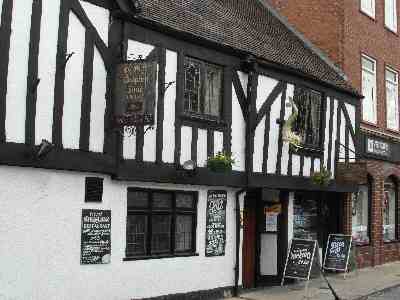
Derby’s oldest surviving pub, the Dolphin, is claimed to have been founded in 1530. The Dolphin was a well-known Christian symbol in medieval days. This gives credibility to the presumed date of the founding of the pub. An old coaching inn, it is said to have been a stopping-off point for highwaymen including Dick Turpin. The pub’s 18th-century extension at the rear was originally a doctor’s house. Here he dissected bodies, using criminals who had been hung. According to folklore, one morning the doctor went down into his cellar. After a body had been delivered and on pulling off the shroud found the person under it still clinging to life. Exactly what happened next is not known.
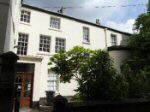
College Place
The College, in College Place, hides away on the western side of Derby Cathedral. It is a large townhouse built on the site of the former home of canons of the pre-reformation College of All Saints. The canons, together with other minor clerics, assistants and domestics lived in the buildings. Today, the building contains remains of 17th-century brickwork that largely dates back to the 1750s. It was altered to Regency style by Tory MP Daniel Parker Coke in 1808 and is now used for offices.
‘Bonnie Prince Charlie’ statue
The bronze equestrian Bonnie Prince Charlie Statue on the green was presented as a gift to the city. By the late Lionel Pickering, a local businessman and benefactor. It was the first equestrian statue to be created anywhere in Britain since the Second World War and celebrates the 250th Anniversary of ‘the 45.’
Following the arrival of Bonnie Prince Charlie and his Jacobite army in Derby on 4 December 1745. An important decision in British history was made. On the previous day, the Prince had been advised by his generals to withdraw and return to Scotland. They were not happy being so far into enemy territory. Without the expected support of the English Jacobites and doubtful that the planned French invasion would take place. The decision to withdraw was made against the wishes of the Prince, who wanted to continue. London was in a panic and had the march continued the path of British history could well have been changed.

